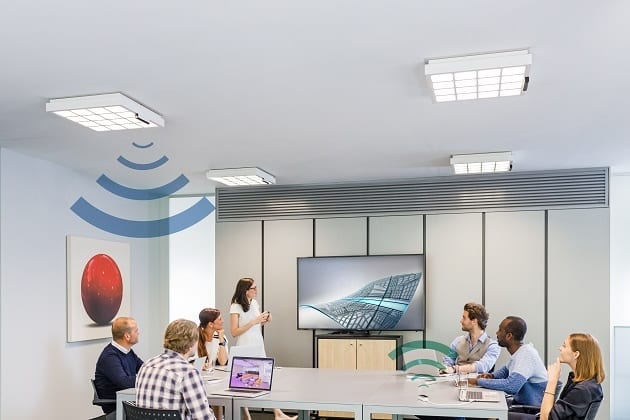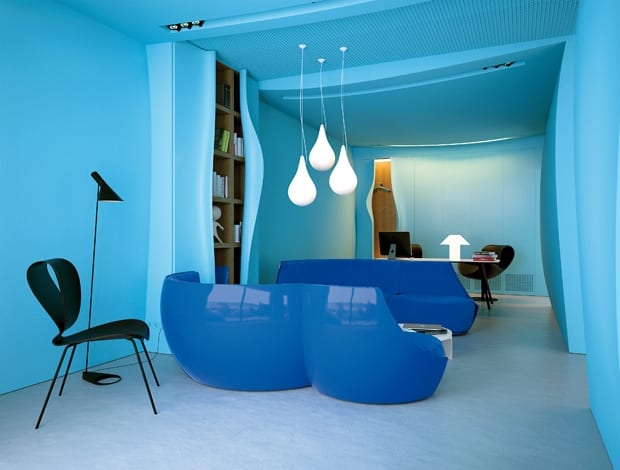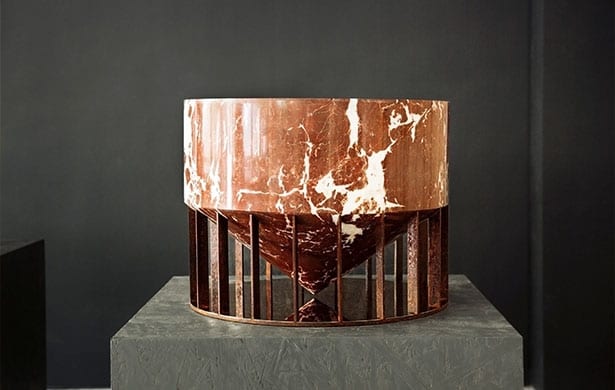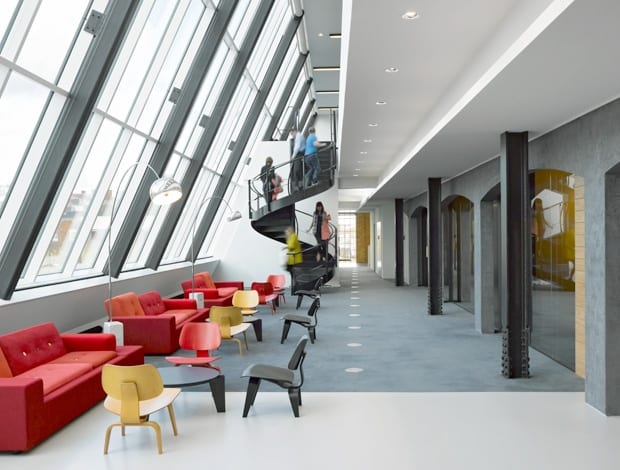 |||
|||
Modern day society is at the height of technology, globalisation, medical advances and constant accessible information. Yet these days, many people around the globe spend the majority of their time in enclosed rooms and buildings – particularly within an office. Thus, creating a workplace that can aid productivity and wellbeing is an obvious move – but how exactly can this be achieved?
Colour and its influence on psychology has been the subject of a longstanding debate throughout history. One of the earliest studies into this correlation was in 1979 by AG Schauss, who examined the effect of colour in American prisons – the outcome was that by painting the walls pink, aggressive behaviour was therefore reduced.
This result became a widely accepted factor that was adopted around the US and Canada, though whether or not its results are applicable in other areas has been raised for discussion. It’s not easy to decipher: the relationship between human behaviour, colour and a particular environment at any particular time is complex, and highly dependent on the situation at hand.
To break down these barriers, Georgia Coleridge, a London-based healer specialising in colour therapy, joined the line-up of speakers at this year’s LDF in September to discuss the fusion of colour and wellbeing in design.
Focus/18 presented a series of workshops centred around the key theme of colour and, alongside Sanderson which hosted a psychology of colour workshop, Coleridge discussed its healing powers and how we can all benefit from the right hue.
“Focus/18 is concentrating on colour, so I was approached to discuss how colour can boost your health, heal your home and enrich your life,” says Coleridge. She plans to decorate her stand with a “bundle of coloured silks” that she uses in her healing studio, and admits that she will be easy to spot during the event.
 Coleridge’s “bundle of coloured silks” will be easy to spot at the show
Coleridge’s “bundle of coloured silks” will be easy to spot at the show
Coleridge specialises in energy healing; her work is announced as a gentle, relaxing therapy that can be highly effective for treating physical, emotional and spiritual ailments, but how did this venture into healing – and the use of colour – come around?
“In my twenties, I felt permanently exhausted with a foggy head and aching joints. I went to the gym and cut back on coffee but that didn’t help,” says Coleridge. She then dabbled in therapies like reiki – a technique involving palm healing or hands-on healing through “universal energy” – acupuncture and reflexology. Their positive difference on her health, ignited her decision to become a healer.
“I heal people and buildings. I start by identifying where the energy feels heavy and stuck. If you have ever been into a cold, creepy house, or an office full of unhappy, angry people, then you will know what I mean. When a place doesn’t feel right, it can make everyone droopy, nervy or both,” she says. “But a home or an office with good energy is a joy. You can work hard, play hard and sleep well. I unblock stagnant energy with my hands, with sound, movement and even with colour.”
Colour has always been a focus point to her work. Noted as a slight “obsession”, Coleridge explains some theory – that the seven colours in the rainbow spectrum are linked with seven powerful energy centres on the body, “called chakras”, and “each chakra is linked to a different colour”.
She’s even written a book about the subject, which depicts “rich earthy reds (base chakra) to beautiful, ethereal violet white (crown chakra)”. She explains further: “Individual colours have a particular vibration on the spectrum of visible light, so they can work energetically. But working only with the energy is not enough because our reaction to colour is so personal,” she says.
How can this inform design and influence the workplace? “Many architects would disagree, but I find monochrome, colourless rooms completely soulless,” she says. “Uncluttered, modern design is great, but people are even happier if they also have pops of colour to cheer them up.”
So next time you’re sitting at your desk feeling uninspired, Coleridge suggests you put a colour on your desk that makes you happy: “Try a blue mug, a purple orchid or a funky orange lamp. It’s much better for your energy than instant coffee and a biscuit.”
Colour therapist Georgia Coleridge explains why designers need to make use of the healing powers of colour































